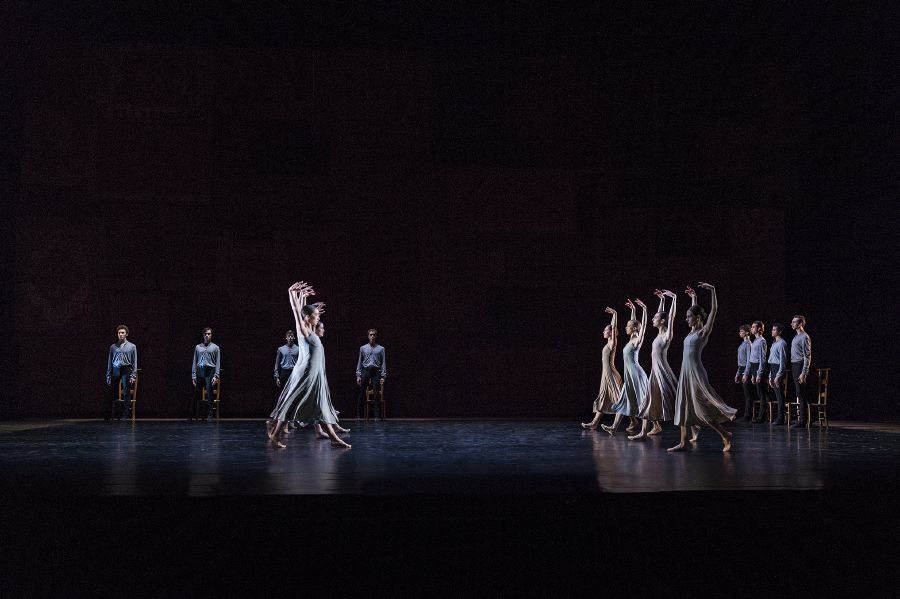Kongelige Teater’s website describes ‘Dans2Go’ as “ballet for everyone at an affordable price”: intended both as a taster for new audiences to demonstrate what choreography and dance can do, as well as a treat for lovers of dance.
Three pieces are performed by three different casts from the Royal Danish Ballet’s corps de ballet – two complete ballets, separated by a pas de deux – covering the broadest possible spectrum, from classical and neo-classical ballet to contemporary dance.
Each section is introduced by brief films of featured dancers.
Shaky start for the classic
Kylián’s neo-classical ‘Symphony’, famous for its simple and picturesque accompaniment to Igor Stravinsky’s biblically-inspired choral music, appeared to confused some audience members.
Obviously, when thinking about ballet, the classical version, the oldest and most formal of all ballet styles, comes to mind, which is why newcomers to the dance naturally expect graceful, flowing movements, pointe work, symmetry and a clear narrative.
However, while there are similarities between the three main styles – classical, neoclassical and contemporary – they differ greatly in terms of the performance and technical aspects.
Neo-classical ballet, introduced in the 20th century, is far less rigid than classical ballet, using flexed hands, turned-in legs, off-centred positions and asymmetry, as well as stripping it of its detailed narrative and heavy theatrical setting.
During the Danish Royal Ballet’s first performance of the evening, some spectators thus seemed confused, maybe even a bit disappointed, by this intentionally conveyed off-balance feel and by what seemed to be a lack of training in proper technique, flexibility and effortlessness. The curtain fell to a rather cautious applause.
Pas de deux as mood-raiser
Up next, Emma Riis-Kofoed’s ‘on-point’ pointe work and Jón Axel Fransson’s incredible height in his grand jetés immediately and noticeable lifted the mood again.
Their ‘Dvořák Pas de Deux’ – a pas de deux is a dance duet and characteristic of classical ballet – by the biggest Danish choreographer of the 20th century, Harald Lander, embodied the charm and beauty of technical, classical ballet – much to the delight of audience.
READ ALSO: Ballet Review: Worthy of its place alongside other classic Swan Lake renditions
Standing ovation for sugar-loving daddies
The break before the closing performance functioned as a caesura both literally and figuratively. Every single aspect of ‘My Daddy Loves Sugar’, a heavy, dark contemporary piece by Danish Royal Ballet company member Oliver Starpov, held everyone in awe.
Simple yet truly breathtaking was the set: white neon-lights framing the black stage and an illuminated glass coffin hung from the ceiling. Both the staging and synthesiser-heavy music were strongly reminiscent of the dystopic, futuristic film ‘Tron’, which stood in direct contrast to the theatre’s interior.
The dance is centred around the human mind, with two main dancers embodying the fight between the seemingly perfect outer shell and an interior filled with dark thoughts, while being constantly surrounded by a group of black shadows.
A furthermore perfect combination of body movements, fluidity and the raw muscle of the entirely male cast, the piece had each member of the audience on the edge of their seats from the very beginning, and they rewarded the dancers with a standing ovation, even shouts of ‘Bravo’ at the end – deservedly so.














